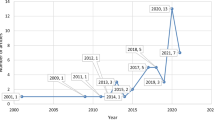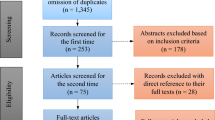Abstract
Literacy is now an essential part of teaching for Indonesian teachers. This qualitative case study reports on three Indonesian teachers as they integrate the use of children’s literature into their literacy instruction. For 4 months, the teachers’ efforts to use children’s literature were documented through multiple sources such as focus group discussions and interviews, teachers’ reflections, and classroom observational notes. The study uses the reader-response theory framework, especially the notion of teachers as part of the learning context in promoting students’ engagement with a text. The study highlighted some case study teachers’ classroom practices centering on children’s literature, giving access to books, infusing children’s literature in teaching, and using books to discuss difficult topics with students. The findings discussion sheds light on some contributing factors to the teachers’ decision to integrate children’s literature into their classrooms and how they could make such decisions. The discussion points to a larger picture of how these teachers were empowered to make decisions to integrate children’s literature, particularly with diverse themes.




Similar content being viewed by others
References
Biesta, G., & Tedder, M. (2007). Agency and learning in the Lifecourse: Towards an ecological perspective. Studies in the Education of Adults, 39(2), 132–149. https://doi.org/10.1080/02660830.2007.11661545
Bishop, R. (1990). Mirrors, windows, and sliding glass doors. Perspectives: Choosing and Using Books for the Classroom, 6(3), P. ix-xi.
Brandt, L., Sharp, A., & Gardner, D. S. (2021). Examination of teacher practices on student motivation for reading. The Reading Teacher, 74(6), 723–731. https://doi.org/10.1002/trtr.1999
Calkins, L. (2001). The art of teaching reading. Longman.
Dewayani, S., & Gina, E. (2014). Cap Go Meh. Litara Publisher.
Durriyah, T. L. (2018). Annotated bibliographies of international children’s literature from selected Asian countries. In Y. Amos & D. Amos (Eds.), Children’s Literature from Asia in Today’s Classrooms: Toward Culturally Authentic Interpretations (pp. 78–82). Rowman & Littlefield.
Durriyah, T. L. (2019). “If we do not include literature, where do we teach our students from?” An effort to introduce children’s literature to Indonesian preservice teachers. Reading Horizons: A Journal of Literacy and Language Arts, 58(3), 52–70.
Durriyah, T. L., Dewayani, S., Silvhiyani, S., & Parlindungan, F. (2023). Making sense of Indonesian literacy teachers agency in teaching intercultural awareness: Using an ecological perspective. Paper presented at the AERA 2023 Annual Meeting, [Online]. Available: https://doi.org/10.3102/2009783
Fisher, D., Flood, J., Lapp, D., & Frey, N. (2004). Interactive read-alouds: Is there a common set of implementation practices? The Reading Teacher, 58(1), 8–17.
Galda, L., Ash, G. E., & Cullinan, B. E. (2000). Research on children’s literature. In K. Mosenthal, P. D. Pearson, & R. Barr (Eds.), Handbook of reading research (Vol. Ill, pp. 563–586). Lawrence Erlbaum Associates.
Garces-Bacsal, R. M., & Tupas, R. (2021). Diverse Picturebooks for diverse children: The others in Singapore teachers’ discourse and pedagogy. Literacy Research and Instruction, 60(4), 372–390. https://doi.org/10.1080/19388071.2021.1878313
Glesne, C. (2006). Becoming qualitative researchers: An introduction. Pearson Education Press.
Greenspan, S. B., Gordon, K. L., Whitcomb, S. A., & Lauterbach, A. A. (2021). Use of video conferencing to facilitate focus groups for qualitative data collection. American Journal of Qualitative Research, 5(1), 85–93. https://doi.org/10.29333/ajqr/10813
Indonesian Ministry of Education. (2016). Desain Induk Gerakan Literasi Sekolah. Jakarta, Indonesia. Retrieved December 22, 2023, from https://repositori.kemdikbud.go.id/39/1/Desain-Induk-Gerakan-Literasi-Sekolah.pdf
Indonesian Ministry of Education. (2022). Capaian pembelajaran Kurikulum Merdeka. Retrieved December 22, 2023, from https://kurikulum.kemdikbud.go.id/kurikulum-merdeka/capaian-pembelajaran
International Literacy Association. (2018). The power and promise of read-alouds and independent reading. Retrieved December 21, 2023, from https://www.literacyworldwide.org/docs/default-source/where-we-stand/ila-power-promise-read-alouds-independent-reading.pdf
Kiefer, B. Z., & Huck, C. S. (2010). Charlotte Huck’s children’s literature (10th ed.). McGraw-Hill.
Kim, S. J., & Cho, H. (2017). Reading outside the box: Exploring critical literacy with Korean preschool children. Language and Education, 31, 110–129. https://doi.org/10.1080/09500782.2016.1263314
Lehman, B. A. (2007). Children’s literature and learning: Literary study across the curriculum. Teachers College Press.
Martin, A.D., Spencer. T. (2020). Children’s literature, culturally responsive teaching, and teacher identity: An action research inquiry in teacher education, Action in Teacher Education, 42(4), 387–404. https://doi.org/10.1080/01626620.2019.1710728
Morrow, L. M., & Gambrell, L. B. (2000). Literature-based reading instruction. In M. Kamil, P. Mosenthal, P. O. Pearson, & R. Barr (Eds.), Handbook of reading research (Vol. Ill, pp. 563–586). Lawrence Erlbaum Associates.
OECD. (2018). The Programme for International Student Assessment (PISA) Indonesia 2018 results Report. Retrieved September 02, 2023, from https://www.oecd.org/pisa/publications/PISA2018_CN_IDN.pdf
Ricklefs, M. C. (2008). History of modern Indonesia since c.1200 (4th ed.). Stanford University Press.
Roser, N., Martinez, M., & Wood, K. (2011). Students’ literary responses. In D. Lapp & D. Fisher (Eds.), Handbook of research on teaching the English language arts (3rd ed., pp. 264–270). Routledge.
Sili, D. S. (1999). An exploration of the implementation of literature based instruction in three fourth grade Indonesian classrooms: Promises and challenges/ [ Doctoral dissertation, Ohio State University]. OhioLINK Electronic Theses and Dissertations Center. Retrieved December 22, 2023, from http://rave.ohiolink.edu/etdc/viewacc_num=osu1488187763844789
Simpson, A. (2021). Teaching with children’s literature in initial teacher education: Developing equitable literacy pedagogy through talk about books. Journal ofLiterary Education, 4, 26–49. https://doi.org/10.7203/JLE.4.21028
Simpson, A. (2016). Choosing to teach with quality literature: From reading (through talk) to writing. Scan, 35(4), 26–38.
Thomas, E. E., Bean-Folkes, J., & Coleman, J. J. (2020). Restorying critical literacies. In E. B. Moje, P.P. Afflerbach, P. Enciso, & N. K. Lesaux (Eds.), Handbook of reading research (Vol. V, pp. 424–435). Routledge.
Yin, R. K. (2018a). Case study research and applications: Design and method (6th ed.). Sage.
Widjati, T., & Dinata, H. K. (2019). Malam tahun baru Kibo. Litara Publisher.
Wolf, S., Coats, K., Enciso, P., & Jenkins, C. (Eds.). (2011). The handbook of research on children's and young adult literature. Routledge.
Yin, R. K. (2018b). Case study research and applications: Design and methods (6th ed.). Sage.
Funding
The research received a grant from Universitas Islam Internasional Indonesia (Author 1’s affiliation).
Author information
Authors and Affiliations
Contributions
The authors confirm contribution to the paper as follows: study conception and design: authors 1, 2, 3, 4; data collection: authors 1, 2, 3, 4; analysis and interpretation of results: author 1; draft manuscript preparation: authors 1, 2, 3, 4, 5. All authors reviewed the results and approved the final version of the manuscript.
Corresponding author
Ethics declarations
Ethics approval
This study was conducted in accordance with Indonesia’s National Research and Innovation Agency (BRIN) ethical clearance for social sciences and humanities and was approved by the Directorate of Research and Strategic Cooperation of Universitas Islam Internasional Indonesia.
Informed consent
Written informed consent was obtained from the participants for their anonymized information to be published in this article.
Conflict of interest
Authors 1, 2, 3, and 5 declare they have no financial interests. Author 4 has received consultant honoraria from the Indonesian Ministry of Education.
Appendix
Appendix
Rights and permissions
Springer Nature or its licensor (e.g. a society or other partner) holds exclusive rights to this article under a publishing agreement with the author(s) or other rightsholder(s); author self-archiving of the accepted manuscript version of this article is solely governed by the terms of such publishing agreement and applicable law.
About this article
Cite this article
Durriyah, T.L., Parlindungan, F., Dewayani, S. et al. Indonesian literacy teachers’ efforts to integrate children’s literature in literacy classrooms. AJLL (2023). https://doi.org/10.1007/s44020-023-00056-0
Received:
Accepted:
Published:
DOI: https://doi.org/10.1007/s44020-023-00056-0




